A tree too close to your house or fence isn’t just a maintenance issue but a big risk. At Dragonetti Tree Removal, we see the damage every year: cracked foundations, warped fences, roof damage, and tripping hazards. Trees grow fast in New York City, and what seemed like a safe distance at planting can become a problem in 10–15 years.
The answer really does depend on the tree type and tree size, and also on how big the tree is expected to get. Safe distances could be anywhere from 8 to 30 feet. Let’s break down which trees you can safely plant and where, and which mature trees are too close to your home or not
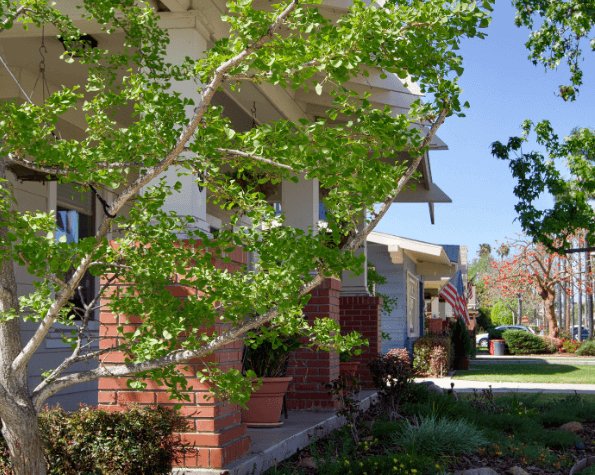
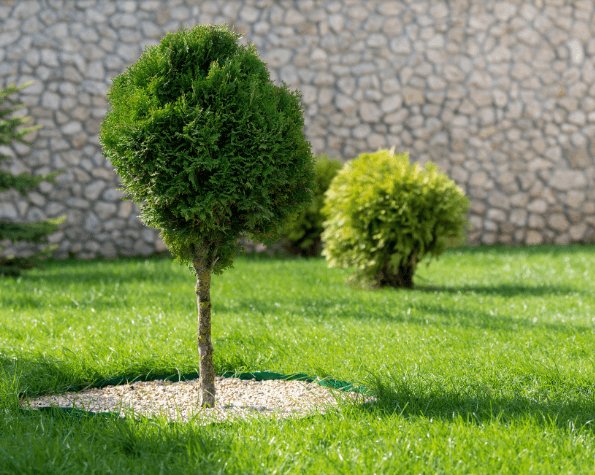
Is a Tree Close to a Home a Risk?
Not every tree close to a house or structure is dangerous. But every close tree should be assessed. Factors such as tree types and stress signs indicate the tree’s risk level when too close to a home.
Tree Types
- Small trees like Japanese maple or serviceberry can be planted closer, 8–10 feet from a structure.
- Medium trees like red maple or hornbeam need 15–20 feet.
- Large trees like pine, oak, sycamore, or a tulip tree should be at least 25–30 feet away.
If the tree is healthy, not leaning, and not causing damage, it should be fine with regular maintenance. But if it’s showing multiple warning signs, full tree removal is often the safest choice.
Signs Your Tree Is Too Close to a Structure
- Tree branches are touching or rubbing against house
- Roots are lifting or cracking the foundation
- Leaves and debris clog gutters and downspouts
- The trunk is within 10 feet of your house or fence
- Tree canopy overhangs roof or chimney
- Roots are growing under your fence
- You hear scraping or tapping sounds from branches
- Moisture builds up on siding under the tree’s shade
- Mushrooms or fungi are growing at the base of the tree near the house
- The tree is a large species (oak, sycamore, maple) planted within 15 feet of a structure
- You’ve noticed cracks in your foundation or walls that align with root growth
- Tree was planted before the house or fence, and now they’re too close
- Neighbors have raised concerns about the tree’s proximity to property lines
- The tree leans toward your house or fence
- You’ve had to repair siding, gutters, or the roof due to tree contact
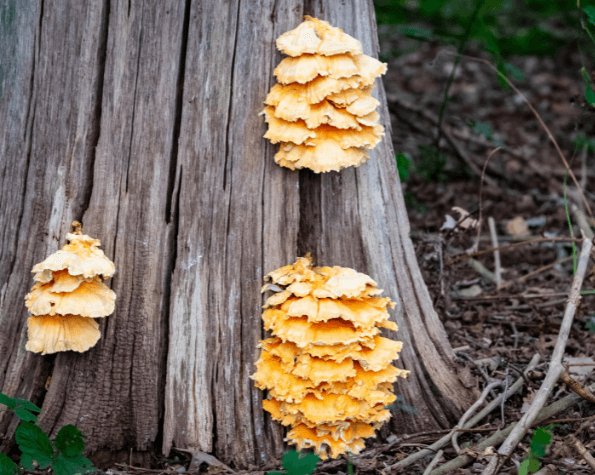
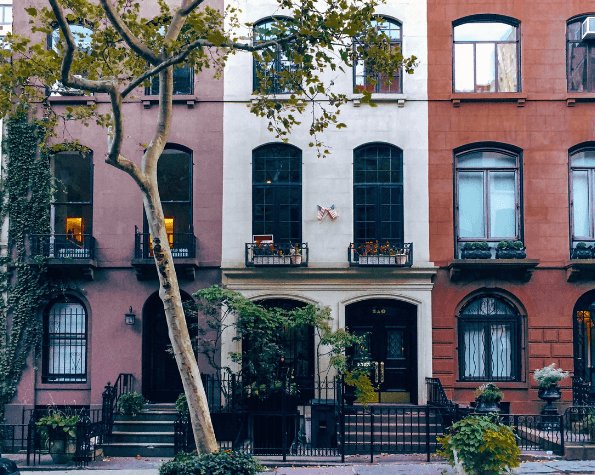
Risks of Having a Tree Too Close to Your Home
- Structural damage
- Falling tree limbs
- Increased insurance premiums or denied claims
- Roof shingle wear from constant branch contact
- Foundation cracks from root pressure
- Siding damage from moisture
- Window and screen damage
- HVAC system interference from blocked airflow
- Fire hazard from limbs touching power lines
- Neighbor disputes over root damage or fallen debris
- Costly emergency tree removal after storm damage
- Mold and mildew growth
- Storm-related power outages
- Unseen root damage to underground utilities
Your Options When a Tree Is Too Close
Option 1: Monitor and Maintain (If Low Risk)
If the tree is healthy and not causing damage, regular pruning, gutter cleaning, and inspections can help. Keep the canopy away from the roof and check for new cracks in the foundation. But if the tree is already close and growing fast, this is only a temporary fix.
Option 2: Prune or Install Barriers (If Moderate Risk)
For trees that are close but not yet dangerous, strategic pruning can reduce risk. Root barriers can help redirect growth away from foundations. But these won’t stop a large tree from eventually causing damage. They’re best used as a short-term strategy.
Option 3: Remove the Tree (If High Risk)
If the tree is large, leaning, or already causing structural damage, removal is the responsible move. A tree within 10 feet of your house can fall on it, it can drop limbs in a storm, and it can spread disease to other trees.
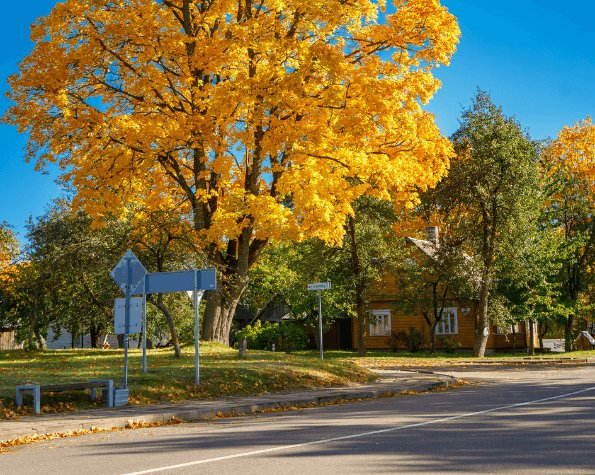
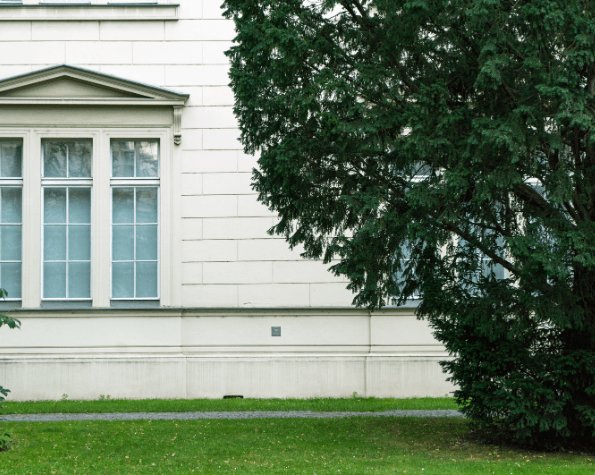
FAQs
Tree roots don’t usually crack solid concrete, but they can exploit existing cracks or cause heaving in older homes with stone or brick walls. In New York City, where soil expands and contracts with temperature, roots can worsen drainage issues and lead to water intrusion.
If you have a tree within 10 feet of your foundation and you’re seeing cracks or moisture in the basement, it’s worth having a certified arborist assess the situation.
You can plant a tree right up to the property line, but it’s not always wise. If the tree grows into your neighbor’s yard, they have the right to trim branches up to the line, but not to cross it.
If roots damage their fence or yard, you could be held liable. To avoid disputes, we recommend planting large trees at least 10–15 feet from the property line, and medium trees 6–8 feet away. It’s better to plan ahead than to deal with conflict later.
If the tree is healthy and not causing damage, it might be fine with regular maintenance, pruning, gutter cleaning, and inspections. But if it’s leaning, has dead branches, or roots are lifting the foundation, it could be a risk. We’ll evaluate the tree’s health, root spread, and storm vulnerability. If the risk is high, removal may be the safest long-term solution.
Yes. Even if the trunk is far away, overhanging branches can rub against the chimney cap or roof vent, wearing down the flashing and creating leaks. Squirrels and raccoons use those branches to get into your attic. And in winter, ice buildup on limbs can break off and damage the flue. We’ve seen chimneys cracked by falling branches from trees planted 20 feet away. If any part of the canopy touches or hangs over your roofline, it’s too close.
Not usually. Trees are drawn to moisture, and septic lines are a direct water source. Roots can enter small cracks in pipes and grow inside, causing blockages or even complete failure. Silver maples, willows, and poplars are especially aggressive. We generally recommend keeping all trees at least 30 feet from septic tanks and drain fields.
You can, but it’s risky. Adding weight and compacting soil around the base stresses the roots. Covering the root zone with concrete or pavers suffocates them. And if the tree ever needs to be removed, taking out a deck built around it becomes a major project. If you’re planning construction, have us evaluate the tree before you build.
Not always, but often. Occasional contact might be manageable with pruning. But constant rubbing wears down siding, shingles, and paint. It creates entry points for pests and moisture. And if the tree shifts in a storm, it can do real structural damage. If the trunk or major limbs are touching your house, it’s not a matter of if damage will happen, but more so when.
Insurance often covers sudden damage from a fallen tree, but not if the tree was clearly unhealthy or improperly maintained. If you had a known hazard, like a leaning tree or one with visible root damage, the claim could be denied. Insurance companies look for negligence. That’s why we always recommend getting a professional assessment if you’re unsure. We can document the tree’s condition and give you a clear recommendation, which protects you either way.
